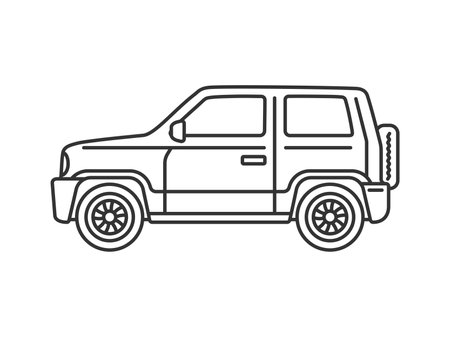1. Introduction to Tire Sidewall Information
If you’ve ever glanced at your car’s tires, you might have noticed a collection of numbers and letters on the sidewall. While these codes might look confusing at first, they actually contain important information every driver in the U.S. should understand. Knowing how to read your tire’s sidewall isn’t just about satisfying curiosity—it’s about ensuring your safety, following the law, and getting the best performance from your vehicle.
Why Tire Codes Matter in America
In the United States, tire codes aren’t just random markings; they’re regulated details that tell you everything from tire size to load capacity and speed rating. Here’s why knowing them matters:
- Safety: Using the wrong type of tire can lead to blowouts or poor handling, especially during harsh weather or emergency situations.
- Legal Compliance: Certain states require specific tire types or tread depths for seasonal driving. Ignoring these can result in fines or failed inspections.
- Performance: The right tires improve fuel efficiency, road grip, and overall comfort, making every drive smoother and more enjoyable.
A Quick Glance: What’s on Your Tire Sidewall?
| Code Section | What It Means |
|---|---|
| P215/65R15 95H | Example of a typical tire code found on most American vehicles |
| P | Tire Type (P = Passenger) |
| 215 | Tire Width in millimeters |
| 65 | Aspect Ratio (height vs width) |
| R | Tire Construction (R = Radial) |
| 15 | Wheel Diameter (in inches) |
| 95 | Load Index (how much weight it can carry) |
| H | Speed Rating (maximum safe speed) |
The American Driving Experience
Tires are more than rubber—they’re your car’s connection to the road. Whether you’re cruising down Route 66 or navigating city streets, having the right tires is essential for safe and legal driving across the country. By understanding what those codes mean, you’ll be prepared to choose the best tires for your needs and enjoy peace of mind every time you hit the road.
2. Decoding Tire Size and Type Markings
When you look at the sidewall of your tire, youll see a sequence of letters and numbers like P215/65R15. This code might seem confusing, but once you understand what each part means, youll know exactly what kind of tire youre dealing with—and how it fits your American vehicle.
Understanding the Tire Code: Example P215/65R15
| Section | What It Means | Example (P215/65R15) |
|---|---|---|
| Type | Tire class for intended use | P (Passenger Vehicle) |
| Width | Width in millimeters from sidewall to sidewall | 215 mm |
| Aspect Ratio | Height as a percentage of width | 65 (means height is 65% of 215mm) |
| Construction | Tire’s internal construction type | R (Radial) |
| Wheel Diameter | The diameter of the wheel in inches the tire fits on | 15 inches |
Tire Type or Class (First Letter)
The code usually starts with a letter indicating what type of vehicle the tire is made for:
- P: Passenger vehicles (most cars, minivans, SUVs in the US)
- LT: Light truck (pickups, SUVs used for towing or heavy loads)
- T: Temporary spare (donut spares)
- No letter: Sometimes European tires skip this, but in America you’ll usually see it.
Tire Width (Three-Digit Number)
This number tells you how wide the tire is from sidewall to sidewall, measured in millimeters. For example, “215” means the tire is 215mm wide. A wider tire can offer better grip but may affect fuel economy.
Aspect Ratio (Two-Digit Number After Slash)
This shows the height of the tires sidewall as a percentage of its width. In “65,” it means the sidewall is 65% as tall as the width of the tire. Lower ratios mean shorter sidewalls for sportier handling; higher means a taller sidewall for a smoother ride.
Construction Type (“R” or “D”)
“R” stands for radial construction, which is by far the most common in American vehicles today. Radial tires are known for durability and comfort. You might rarely see “D” for bias-ply tires, mostly used on certain trailers or classic cars.
Wheel Diameter (Final Two Digits)
This number tells you what size wheel (in inches) the tire will fit. “15” means you need a 15-inch rim. Always make sure your new tires match your vehicle’s wheel size.
A Quick Reference Guide for Common U.S. Vehicles
| Vehicle Type | Typical Tire Code Prefixes |
|---|---|
| Sedan / Minivan / SUV (everyday driving) | P or no prefix (e.g., P215/65R16 or 205/55R16) |
| Pickup Truck / Heavy SUV (towing or hauling) | LT (e.g., LT245/75R16) |
| Spares / Donuts | T (e.g., T125/80D16) |
Why These Codes Matter in America
The right tire size and type help ensure safety, performance, and even fuel economy. Using tires not recommended for your car could affect handling or even void your warranty. Next time you shop for tires or check your owners manual, these codes will help you pick whats best for your vehicle and driving style.

3. Understanding Tire Ratings: Load, Speed, and Performance
When you look at your tire’s sidewall, you’ll find a series of numbers and letters that do more than just tell you the size—they also reveal how much weight your tire can safely carry, how fast it can go, and how it should perform under different conditions. Here’s how to break down these important ratings, especially as they apply to drivers in the United States.
Load Index: How Much Weight Can Your Tire Carry?
The load index is a number found after the tire size on the sidewall. This number tells you the maximum weight each tire can support when properly inflated. In America, this is especially important for everything from family cars to pickup trucks hauling heavy loads.
| Load Index | Pounds per Tire |
|---|---|
| 85 | 1,135 lbs |
| 91 | 1,356 lbs |
| 95 | 1,521 lbs |
| 100 | 1,764 lbs |
| 110 | 2,337 lbs |
You’ll usually see the load index right before or after the speed rating on your tire (for example: 225/65R17 102T, where 102 is the load index). Make sure your tires have a load rating that meets or exceeds your vehicle manufacturer’s recommendations—especially if you often carry extra passengers or cargo.
Speed Rating: How Fast Can You Go?
The speed rating is shown by a letter right after the load index. It indicates the top speed at which your tire can safely perform. For most U.S. drivers, common speed ratings are S (112 mph), T (118 mph), H (130 mph), and V (149 mph). Even though American speed limits rarely approach these numbers, using the correct speed rating helps ensure safety and optimal handling.
| Speed Rating Letter | Maximum Speed (mph) |
|---|---|
| S | 112 mph |
| T | 118 mph |
| H | 130 mph |
| V | 149 mph |
| Z (W/Y) | 168+ mph (W=168, Y=186) |
Selecting a tire with a lower speed rating than recommended can affect your car’s performance and may even void warranties or insurance coverage in case of an accident.
Tire Performance Indicators: More Than Just Size and Speed
Apart from load and speed ratings, there are other key indicators on U.S. tires:
- Treadwear Grade: Tells you how long the tread might last compared to a reference tire. A higher number means longer potential lifespan.
- Traction Grade: Shows how well your tires stop on wet pavement. Grades range from AA (best) to C (least effective).
- Temperature Grade: Indicates resistance to heat buildup at high speeds; grades are A (highest), B, or C.
| Tire Indicator | Description/Range |
|---|---|
| Treadwear Grade | Typically 200–700+ |
| Traction Grade | AA, A, B, C |
| Temperature Grade | A, B, C |
The combination of these ratings helps U.S. drivers pick tires that match their vehicle type, driving habits, road conditions, and climate—all crucial for safe and enjoyable driving.
4. Additional Markings: DOT Codes, Manufacturing Dates, and Safety Tags
Besides the main tire codes and ratings, your tire sidewall contains other important information that helps you stay safe and make informed choices. Let’s break down what these extra markings mean for drivers in the U.S.
DOT Codes: What They Mean
The Department of Transportation (DOT) code is a unique identifier required on all tires sold in the United States. This code tells you that your tire meets federal safety standards. It also includes a bunch of letters and numbers that give more specific details about where and when your tire was made.
How to Find and Read the DOT Code
The DOT code is usually found near the rim on one side of your tire. It starts with the letters “DOT” followed by up to 12 characters. Here’s how to break it down:
| Section | Description | Example |
|---|---|---|
| DOT | Department of Transportation approval | DOT |
| Plant Code | Tells where the tire was manufactured (2 characters) | 1A |
| Tire Size Code & Optional Code | Manufacturer-specific info (up to 6 characters) | 9XYZ123 |
| Date Code | The week and year the tire was made (last 4 digits) | 3423 (34th week of 2023) |
Manufacturing Date: Why It Matters
The last four digits of the DOT code are especially important—they tell you when the tire was made. For example, if you see “2319,” it means your tire was produced in the 23rd week of 2019. Tires older than six years are more likely to experience issues like cracking or loss of grip, even if they have plenty of tread left. It’s always a good idea to check this date before buying new or used tires.
Quick Reference for Date Codes
| Date Code Example | Meaning |
|---|---|
| 0420 | 4th week of 2020 |
| 5118 | 51st week of 2018 |
| 1217 | 12th week of 2017 |
Safety-Related Markings You Should Know About
Apart from DOT codes and manufacturing dates, look out for other key safety markings:
- Treadwear Indicators: Small bars molded into the tread grooves that appear as the tire wears down. When they’re flush with the tread, it’s time for new tires.
- M+S (Mud and Snow): Means the tire is rated for basic traction in mud and snow—helpful if you drive in variable weather.
- Three-Peak Mountain Snowflake (3PMSF): Indicates the tire meets higher standards for severe snow conditions. Great for winter driving!
- Safety Warning Labels: Some tires have extra warnings or advisories stamped right on them—always take a moment to read these before use.
- Maximum Load/Pressure Info: Shows how much weight the tire can safely carry and at what pressure.
Your Quick-Check List:
- D.O.T. code present?
- Date code within last 6 years?
- Treadwear indicators visible?
- M+S or 3PMSF symbols if you need all-weather or winter performance?
- No unusual warning labels?
- Max load/pressure fits your vehicle’s needs?
If you keep an eye on these markings, you’ll be better equipped to choose safe, reliable tires that suit your driving style and local road conditions.
5. Tips for Choosing and Maintaining the Right Tires
Selecting the Right Tires for Your Vehicle
When you’re picking out new tires, understanding tire codes and ratings on the sidewall is essential. These markings aren’t just random—they tell you about size, load capacity, speed rating, and more. For American drivers, this info helps ensure your tires are a perfect fit for local roads and driving conditions.
Quick Guide: What to Check on Your Tire Sidewall
| Tire Code Element | What It Means |
|---|---|
| P or LT | P = Passenger car; LT = Light truck/SUV |
| Width (e.g., 225) | Tire width in millimeters |
| Aspect Ratio (e.g., 50) | Sidewall height as % of width |
| Construction (R) | R = Radial construction |
| Wheel Diameter (e.g., 17) | The wheel size in inches |
| Load Index & Speed Rating (e.g., 94V) | How much weight the tire can carry & its max safe speed |
Tips for Picking Tires That Suit U.S. Roads
- Consider the climate: If you drive in snowy states like Michigan or Colorado, look for tires marked with the mountain snowflake symbol for winter grip. In warmer regions like Florida or Texas, all-season or summer tires may be best.
- Check your owner’s manual: Always match the size and type recommended by your vehicle manufacturer.
- Think about your driving style: Do you do a lot of highway miles? Look for tires rated for high mileage and quiet performance. Off-roading? Choose all-terrain or mud-terrain tires labeled “LT.”
- Mind the speed and load ratings: Don’t go below what’s listed on your current tire code—especially if you haul heavy loads or drive fast highways.
Tire Maintenance Tips for Safety and Longevity
- Check pressure monthly: Use a reliable gauge and set it to your car’s recommended PSI (usually found on a sticker inside the driver’s door).
- Rotate regularly: Most U.S. mechanics suggest rotating tires every 5,000-7,500 miles to prevent uneven wear.
- Inspect tread depth: Use the penny test: insert a penny into the tread with Lincoln’s head upside down—if you see all of Lincoln’s head, it’s time to replace your tires.
- Avoid overloading: Don’t exceed your tire’s load index; it can lead to blowouts or faster wear.
- Watch for damage: Bulges, cracks, or punctures mean it’s time for professional inspection or replacement.
Tread Depth Reference Table
| Tread Depth (in 32nds of an inch) | Status | Advice |
|---|---|---|
| 8-10/32” | Excellent | No action needed |
| 6/32” | Satisfactory | Monitor regularly, especially before wet seasons |
| <4/32” | Poor | Plan replacement soon for safety |
| <2/32” (Legal minimum) | Dangerous | Replace immediately! |
A Little Extra: When in Doubt, Ask a Local Pro!
If you’re ever unsure about what those codes mean or which tire works best for your needs, don’t hesitate to visit a trusted tire shop near you. Local experts can help decode sidewalls and recommend options that fit your budget and lifestyle—keeping you safer on America’s roads.


